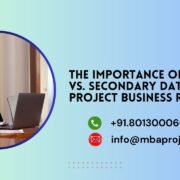How to Choose a Dissertation Topic with Real-World Impact
Global Business Trends: How to Choose a Dissertation Topic with Real-World Impact
Introduction
How to Choose a Dissertation Topic with Real-World Impact. Choosing a dissertation topic in the field of global business trends is a crucial decision for any student pursuing an MBA, business administration, or international trade degree. Your topic should not only align with your interests but also have a real-world impact, ensuring relevance in today’s dynamic business environment. In this article, we explore strategies for selecting the best dissertation topic that will contribute to academic excellence and professional growth.
Understanding the Importance of a Relevant Dissertation Topic
A dissertation is not just an academic requirement; it is a reflection of your expertise, research capabilities, and analytical skills. A well-chosen topic:
- Addresses current global business challenges
- Provides practical solutions applicable in the real world
- Enhances your career prospects by showcasing your expertise
- Contributes to academic research and industry development
Key Factors to Consider When Selecting a Dissertation Topic
1. Industry Relevance and Practical Application
Your topic should align with current business trends, industry demands, and global economic shifts. Consider researching areas like:
- Sustainable Business Practices: Examining how corporations integrate sustainability into their business models.
- Digital Transformation: Analyzing how emerging technologies like AI, blockchain, and IoT are reshaping global businesses.
- Supply Chain Resilience: Understanding the impact of geopolitical tensions and pandemics on global supply chains.
2. Availability of Research Material
A strong dissertation requires ample data, including case studies, statistical reports, and academic journals. Ensure that your topic has enough published literature and real-world case studies for reference.
3. Personal Interest and Career Aspirations
Your dissertation should reflect your personal interests and align with your long-term career goals. For example:
- If you aim for a career in finance, topics on global investment trends, cryptocurrency markets, or fintech innovations may be ideal.
- If marketing is your focus, explore consumer behavior in the digital age, influencer marketing impact, or AI-driven marketing analytics.
4. Scope and Feasibility
Avoid topics that are too broad or too narrow. Ensure that your research can be conducted within the given timeframe and academic requirements.
Top Global Business Trends for Dissertation Topics
1. The Role of Artificial Intelligence in Business Decision-Making
Artificial Intelligence (AI) is transforming industries worldwide. This topic explores how AI-driven analytics and automation are influencing corporate strategies and operational efficiencies.
2. The Impact of Remote Work on Global Business Productivity
With the rise of hybrid and remote work environments, companies are redefining productivity metrics, work culture, and employee engagement. This research could analyze the long-term sustainability of remote work models.
3. The Influence of ESG (Environmental, Social, and Governance) Investing
Sustainable investing is reshaping financial markets. A dissertation could explore how investors prioritize ESG factors and their impact on corporate profitability.
4. Global Supply Chain Disruptions: Lessons from the COVID-19 Pandemic
Understanding how global businesses adapted to supply chain disruptions can provide insights into future crisis management strategies.
5. Cryptocurrency and the Future of Global Financial Systems
Bitcoin, Ethereum, and other cryptocurrencies are challenging traditional banking systems. This topic examines the feasibility of decentralized finance (DeFi) and regulatory concerns surrounding digital assets.
6. The Rise of E-commerce and the Decline of Traditional Retail
As e-commerce giants continue to dominate, traditional retail faces challenges. This research could analyze the future of physical retail stores and their adaptation strategies.
7. The Effectiveness of Influencer Marketing in Consumer Behavior
Social media influencers are shaping purchasing decisions. A dissertation could analyze ROI (Return on Investment) in influencer marketing campaigns and consumer trust.
How to Structure Your Dissertation for Maximum Impact
A well-structured dissertation is crucial for effective communication. Here’s a suggested format:
1. Introduction
- Background of the topic
- Research problem and objectives
- Significance of the study
2. Literature Review
- Overview of existing studies
- Identification of research gaps
- Theoretical framework
3. Research Methodology
- Research design (qualitative, quantitative, or mixed-method)
- Data collection methods
- Sampling techniques
4. Data Analysis and Findings
- Interpretation of collected data
- Graphs, charts, and tables for better clarity
5. Discussion and Implications
- Relating findings to real-world applications
- Business recommendations
6. Conclusion and Recommendations
- Summary of key findings
- Future research directions
- Limitations of the study
Conclusion
Choosing a global business dissertation topic requires a balance between personal interest, industry relevance, and academic feasibility. The business world is evolving rapidly, and selecting a topic with real-world impact can not only enhance your academic credibility but also open doors to career opportunities. By focusing on current global trends, leveraging extensive research, and presenting actionable insights, you can ensure your dissertation stands out.
Thank you for reading our Blog “Global Business Trends: How to Choose a Dissertation Topic with Real-World Impact”.
Also, read our more BLOG here.
For Order “MBA Projects” feel free to contact us at Mob: Call / WhatsApp: +91.8013000664 || Email: info@mbaprojects.net.in






